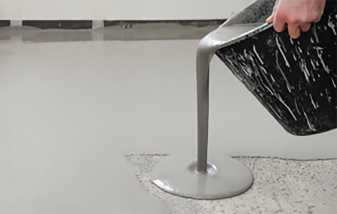
Nov . 10, 2024 11:27 Back to list
Understanding the Meaning of HPMC in Various Contexts and Applications
Understanding HPMC What it Stands For and Its Applications
HPMC, or Hydroxypropyl Methylcellulose, is a widely used cellulose derivative that has become a staple in various industries due to its unique properties and versatility. In this article, we will delve into what HPMC stands for, its chemical structure, and various applications across different fields.
What is HPMC?
Hydroxypropyl Methylcellulose is a semi-synthetic polymer derived from natural cellulose, which is the primary component of the cell walls of plants. The modification process involves treating cellulose with propylene oxide and methyl chloride, resulting in a compound with improved solubility and functionality compared to its parent cellulose. HPMC is colorless, odorless, and tasteless, making it an ideal additive for numerous products.
Chemical Structure and Properties
HPMC is characterized by its hydroxypropyl and methyl groups attached to the cellulose backbone. The degree of substitution of these groups affects the solubility and viscosity of HPMC in water. This aspect is crucial because different applications require specific forms of HPMC—some need higher solubility while others need enhanced viscosity.
The properties of HPMC also include
- Non-ionic nature This makes HPMC stable and suitable for use in a variety of formulations without causing unwanted reactions. - Thickening agent HPMC can increase the viscosity of solutions, making it a valuable ingredient in products where texture is important. - Film-forming ability HPMC can create a semi-permeable film, which is useful for various applications including topical formulations and food products. - Gel-forming characteristics Under certain conditions, HPMC can form gels, making it useful in specific pharmaceutical applications.
Applications of HPMC
what does hpmc stand for

The versatility of HPMC allows it to find applications in multiple sectors, including the following
1. Pharmaceuticals HPMC is widely used in the pharmaceutical industry for tablet coatings, controlled-release formulations, and as a binder in tablet production. Its ability to form gels and films makes it ideal for sustained drug release, ensuring that medication is gradually released into the body over time.
2. Food Industry In the food sector, HPMC serves as a thickening and stabilizing agent in sauces, dressings, and bakery products. It enhances texture, improves mouthfeel, and can replace fats while maintaining product integrity. Additionally, it is often used in gluten-free baking as a substitute for gluten, helping to improve the structure and moisture retention of baked goods.
3. Cosmetics and Personal Care Products HPMC is employed in cosmetics for its thickening and emulsifying properties. It is found in lotions, creams, shampoos, and other personal care products where smooth application and stability are desired. Its film-forming ability also makes it suitable for hair styling products that provide hold without stiffness.
4. Construction In the construction industry, HPMC is used in tile adhesives, paints, and other building materials. Its ability to improve workability and water retention helps enhance the performance of construction materials, particularly in cement-based products.
5. Agriculture HPMC is also utilized in agriculture, where it can be employed as a stabilizer and thickener in pesticide formulations and as a coating agent for fertilizers. Its non-toxic and environmentally friendly nature makes it suitable for use in sustainable agricultural practices.
6. Industrial Applications Beyond consumer products, HPMC finds utility in various industrial applications, including paper production, textiles, and oil drilling fluids. Its thickening and film-forming properties are exploited to improve product quality and performance in these areas.
Conclusion
In summary, HPMC (Hydroxypropyl Methylcellulose) represents a significant advancement in the realm of cellulose derivatives, offering a blend of functionality and versatility that caters to diverse industries. From pharmaceuticals to food and cosmetics to construction, HPMC continues to enhance product formulations, significantly impacting both consumer experience and industrial applications. As research advances and new applications are discovered, HPMC's role in modern products is poised to expand further, emphasizing the importance of this remarkable compound in our daily lives.
-
Versatile Hpmc Uses in Different Industries
NewsJun.19,2025
-
Redispersible Powder's Role in Enhancing Durability of Construction Products
NewsJun.19,2025
-
Hydroxyethyl Cellulose Applications Driving Green Industrial Processes
NewsJun.19,2025
-
Exploring Different Redispersible Polymer Powder
NewsJun.19,2025
-
Choosing the Right Mortar Bonding Agent
NewsJun.19,2025
-
Applications and Significance of China Hpmc in Modern Industries
NewsJun.19,2025







